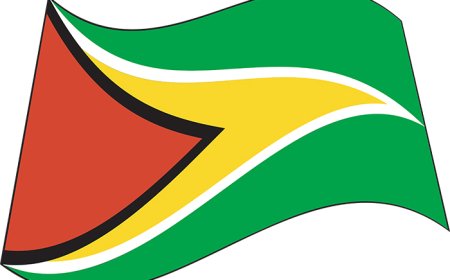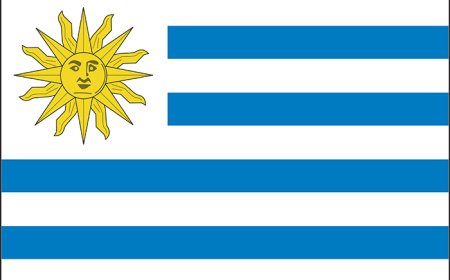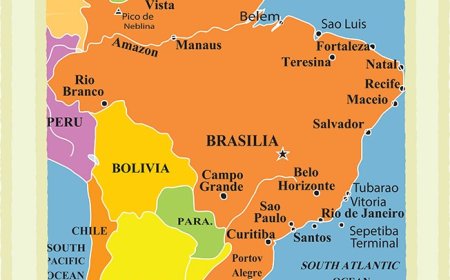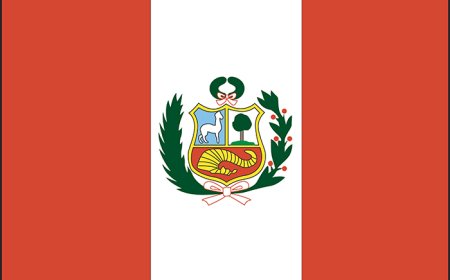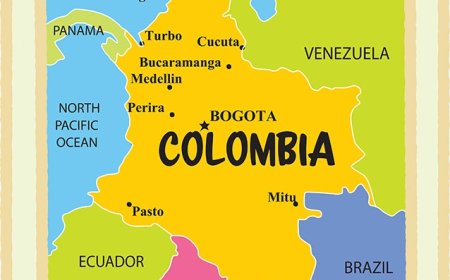Suriname Facts for Kids: Geography, Culture & History
Learn about Suriname’s rainforests, rivers, and cultural mix in this fun, student-friendly guide
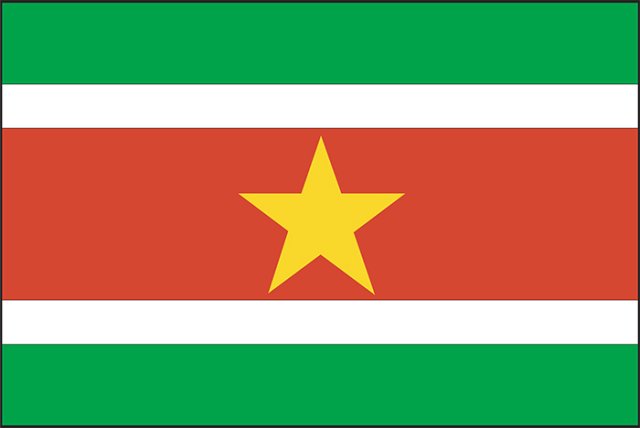
🌎 Introduction
Suriname is the smallest country in South America, located on the northeastern coast. It's known for its tropical rainforests, wide rivers, and incredible cultural diversity. People from many backgrounds live together in this peaceful, green nation.
🗺️ Geography & Climate
Suriname borders the Atlantic Ocean, Guyana, Brazil, and French Guiana. Much of the country is covered by dense tropical rainforest. The main river is the Suriname River, which flows through the capital city, Paramaribo.
The climate is tropical, with warm temperatures year-round and rainy seasons from April to August and November to February.
📜 History
Before Europeans arrived, Indigenous peoples such as the Arawak and Carib lived in Suriname. In the 1600s, the Dutch and English established plantations along the rivers.
Suriname became a Dutch colony in the late 1600s and remained under Dutch control for over 300 years. African slaves were brought to work on plantations, and after slavery ended in 1863, workers from India, Indonesia, and China came to Suriname.
Suriname gained independence from the Netherlands in 1975. Since then, it has been a republic.
🏛️ Government
Suriname is a democratic republic with three main branches:
-
President - Elected by the National Assembly for a five-year term
-
National Assembly - Makes laws and represents the people
-
Courts - Ensure laws follow the constitution
The country is divided into 10 districts.
💰 Economy & Natural Resources
Suriname's economy is based on mining, farming, and forestry.Main exports include:
-
Bauxite (used to make aluminum)
-
Gold
-
Oil
-
Rice and bananas
Tourism is growing, especially for eco-tours in the rainforest.
👨👩👧 People & Culture
Suriname is one of the most culturally diverse countries in the world. Its people have roots in:
-
Indigenous tribes
-
Africa
-
India
-
Indonesia
-
China
-
Europe
This mix influences food, music, and celebrations. Popular festivals include:
-
Holi Phagwa - Hindu festival of colors
-
Owru Yari - New Year's Eve celebrations with fireworks
-
Indigenous People's Day
Foods combine flavors from many cultures:
-
Roti with curry
-
Pom (chicken casserole)
-
Saoto soup (chicken and egg soup)
🗣️ Languages & Religions
-
Official Language: Dutch
-
Many people speak Sranan Tongo (a local Creole), as well as Hindi, Javanese, Chinese, and Indigenous languages
Religion:
-
Christianity
-
Hinduism
-
Islam
-
Indigenous beliefs
🎓 Education & Traditions
School is free and required for children from ages 6 to 12. Most schools teach in Dutch. Education includes reading, math, science, and social studies.
Surinamese traditions include music styles like kaseko, storytelling, and colorful parades.
🐾 Animals & Environment
Suriname is mostly rainforest, home to:
-
Jaguars
-
Giant river otters
-
Scarlet ibises
-
Sloths
-
Monkeys
The country is part of the Amazon Rainforest, which helps produce oxygen for the planet.
🏙️ Major Cities & Landmarks
-
Paramaribo - The capital, known for wooden colonial buildings
-
Nieuw Nickerie - Agricultural center
-
Albina - Gateway to French Guiana
Famous landmarks:
-
Central Suriname Nature Reserve (UNESCO World Heritage site)
-
Fort Zeelandia
-
Brownsberg Nature Park
🎉 Fun Facts About Suriname
-
Smallest country in South America by size and population
-
Over 90% of the land is covered by forest
-
Only country in South America where Dutch is the official language
-
People from many different backgrounds live peacefully together
-
Paramaribo's historic center is a UNESCO World Heritage site
🧒 Kid-Friendly Summary
Suriname may be small, but it's full of life. With its huge rainforests, many rivers, and friendly people from around the world, Suriname is a colorful mix of cultures and nature. From jaguars in the wild to wooden buildings in Paramaribo, there's a lot to explore.
📚 Vocabulary Words
| Word | Definition |
|---|---|
| Tropical | Warm, humid climate near the equator |
| Colony | A territory ruled by another country |
| Independence | Freedom from rule by another country |
| Republic | A government where people elect their leaders |
| Bauxite | A mineral used to make aluminum |
| Creole | A language that blends words from several languages |
| Eco-tourism | Tourism focused on nature and conservation |
| UNESCO | United Nations group that protects important sites |
| Diverse | Made up of many different types of people or things |
| Reserve | A protected area for nature and wildlife |
🧠 Interactive Quiz: Test Your Suriname Knowledge!
1. What is the capital of Suriname?
A. Albina
B. Nieuw Nickerie
C. Paramaribo
D. Fort Zeelandia
2. What is the official language of Suriname?
A. English
B. Dutch
C. Spanish
D. French
3. What type of climate does Suriname have?
A. Arctic
B. Desert
C. Tropical
D. Mountain
4. Which mineral is one of Suriname’s main exports?
A. Copper
B. Bauxite
C. Silver
D. Iron
5. Over what percentage of Suriname is covered by forest?
A. 50%
B. 70%
C. 90%
D. 30%
6. What is kaseko?
A. A type of food
B. A music style
C. A city in Suriname
D. A rainforest animal


















































